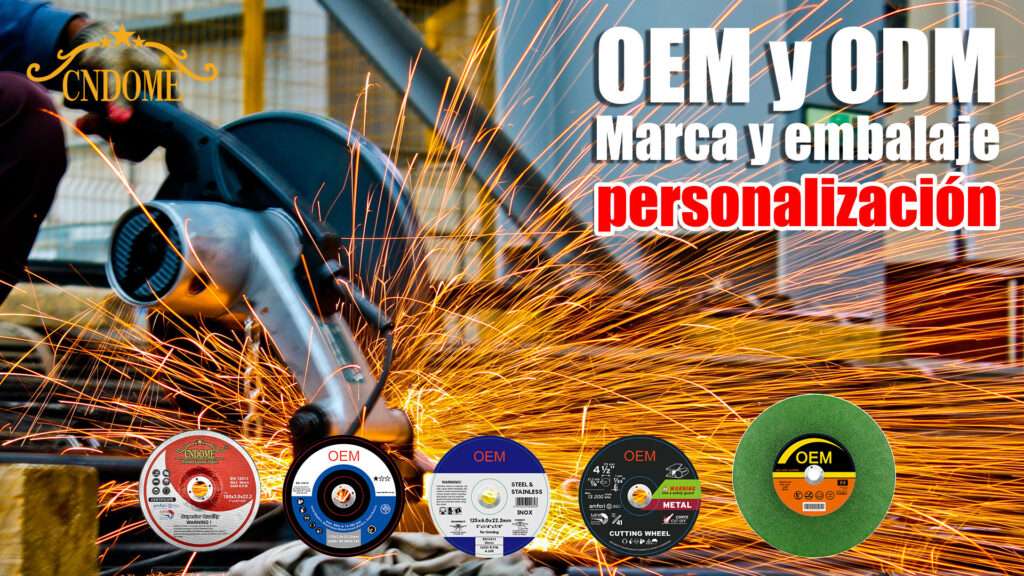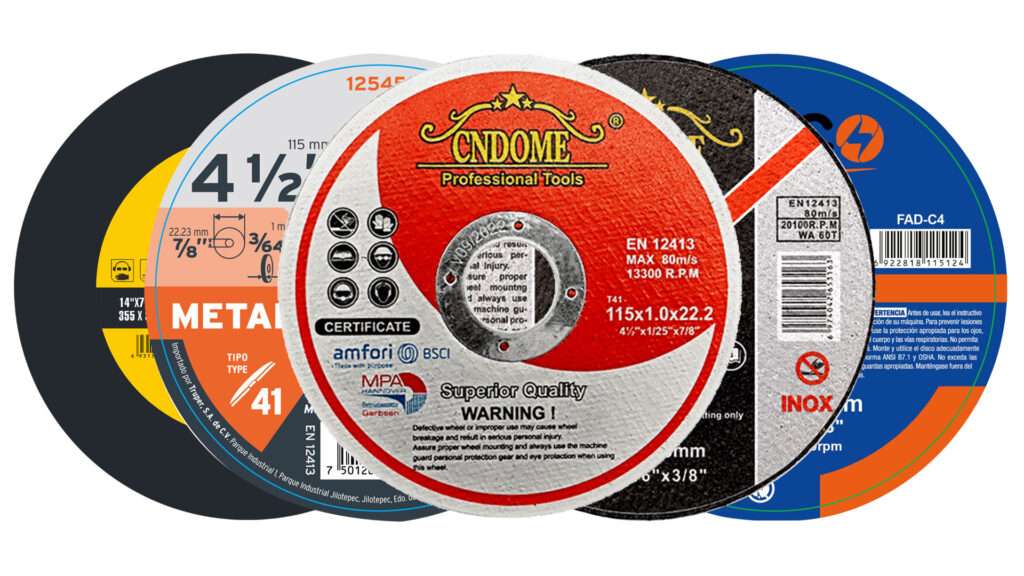Abrasive discs are tools that are commonly used in a variety of industrial and manufacturing applications. These discs are designed to grind, cut, and shape various materials, such as metal, stone, and concrete. They come in a range of shapes and sizes, each designed for a specific task.
Grinding discs can be divided into two categories:
Cutting discs are used to cut through materials, while grinding wheels are used to remove material and shape surfaces. Both types of discs are typically made of abrasive materials such as aluminum oxide, silicon carbide, or diamond particles.
Abrasive discs are available in a variety of sizes, ranging from small handheld discs for use with angle grinders to larger discs designed for use with stationary machines. They are also available in a range of thicknesses, allowing users to choose a disc that is appropriate for the task at hand.
When selecting an abrasive disc, it’s important to consider the material being worked on, as well as the desired outcome. Different discs are designed for use with specific materials and will produce different finishes. It’s also important to consider the speed and power of the machine being used, as well as any safety precautions that should be taken.

Overall, cutting wheels are an essential tool for anyone working with materials that need to be shaped, cut, or ground. By choosing the right disc for the job, users can ensure that they achieve the desired outcome efficiently and safely.
When it comes to cutting discs, choosing the right one is essential for getting the job done safely and effectively. With so many different types available, it can be challenging to know which one is right for your needs. In this article, we’ll take a closer look at how to choose different types of cutting discs and what you should consider before making your selection.
1.Material being cut
The first and most critical factor to consider when selecting a cutting disc is the material you will be cutting. Different materials require different types of discs, and using the wrong one can be dangerous and ineffective. For example, a disc designed for cutting metal may not work well on concrete or masonry. Always check the manufacturer’s recommendations for the materials their discs are suitable for cutting.
2.Disc diameter
Cutting discs come in a range of sizes, and the diameter of the disc you choose will depend on the size of the tool you’ll be using it with. Small angle grinders typically use discs with diameters of 4.5 inches or less, while larger tools may require discs that are 7 inches or more in diameter.
3.Disc thickness
Disc thickness is another essential factor to consider when choosing a cutting wheel. Thicker discs are more durable and can last longer, but they may also produce more dust and debris. Thinner discs, on the other hand, are more prone to breaking and can wear out quickly if used improperly. The thickness of the disc you choose will depend on the material being cut and the tool you’re using.
4.Disc type
There are two main types of cutting discs: abrasive and diamond. Abrasive discs are made of materials like aluminum oxide or silicon carbide and are ideal for cutting materials like metal, stone, and concrete. Diamond discs, as the name suggests, have diamond particles embedded in them and are designed for cutting harder materials like tile and granite.
5.Disc speed
The speed of the cutting wheel is another critical factor to consider. Most cutting discs have a maximum speed rating that indicates how fast they can safely rotate. Using a disc at a higher speed than it’s rated for can be dangerous and can cause the disc to break or wear out quickly.
6.Application
Finally, consider the application when choosing a cutting wheel. Are you making precision cuts that require a high level of accuracy? Are you working on a large project that will require a lot of cutting? The answers to these questions can help you determine the best type of disc for your needs.

In conclusion, choosing the right cutting disc requires careful consideration of several factors, including the material being cut, disc diameter, thickness, type, speed, and application. By taking the time to research and choose the right disc for your needs, you can ensure a safe and effective cutting experience.
If you are interested in our cutting and grinding discs. Welcome to contact us to provide free samples for quality testing, we will be your best choice. We look forward to further cooperation with customers all over the world.

